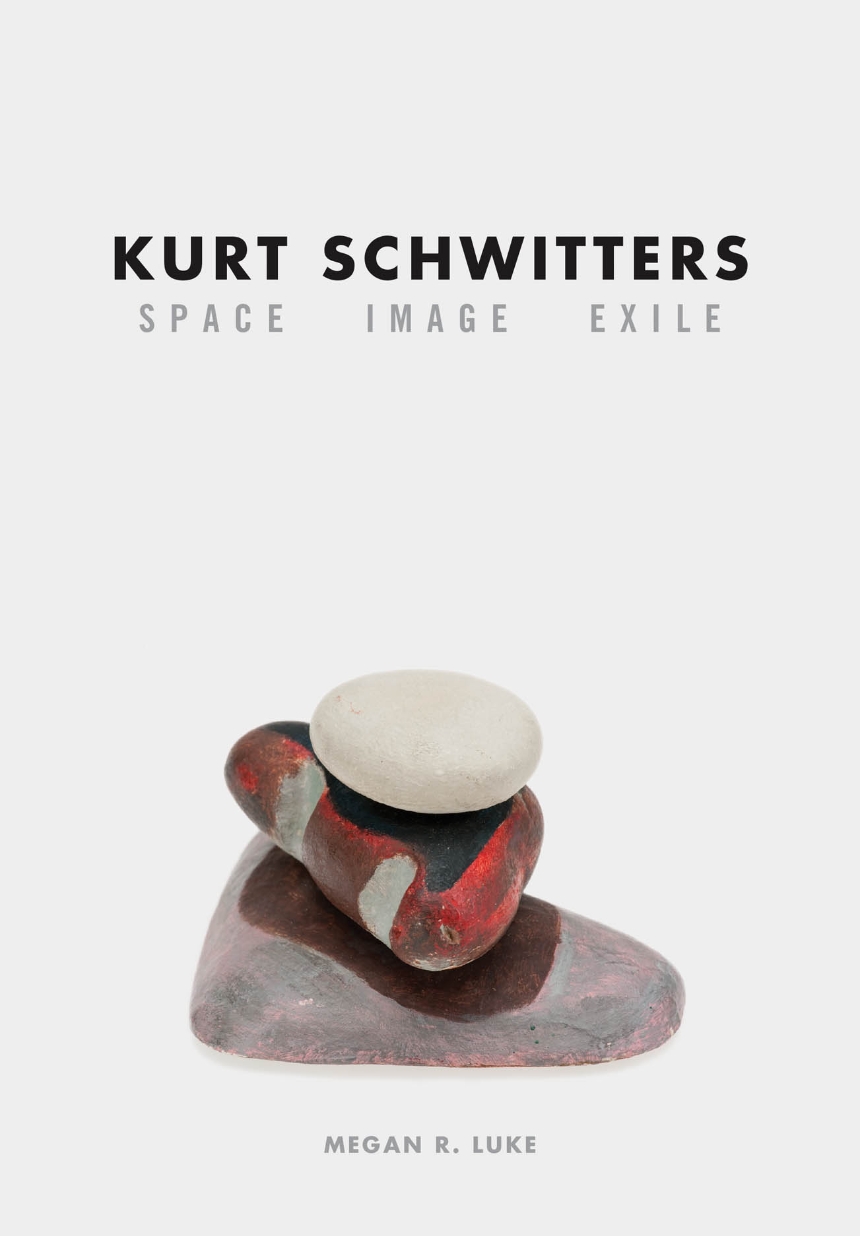Kurt Schwitters
Space, Image, Exile
German artist Kurt Schwitters (1887–1948) is best known for his pioneering work in fusing collage and abstraction, the two most transformative innovations of twentieth-century art. Considered the father of installation art, Schwitters was also a theorist, a Dadaist, and a writer whose influence extends from Robert Rauschenberg and Eva Hesse to Thomas Hirschhorn. But while his early experiments in collage and installation from the interwar period have garnered much critical acclaim, his later work has generally been ignored. In the first book to fill this gap, Megan R. Luke tells the fascinating, even moving story of the work produced by the aging, isolated artist under the Nazi regime and during his years in exile.
Combining new biographical material with archival research, Luke surveys Schwitters’s experiments in shaping space and the development of his Merzbau, describing his haphazard studios in Scandinavia and the United Kingdom and the smaller, quieter pieces he created there. She makes a case for the enormous relevance of Schwitters’s aesthetic concerns to contemporary artists, arguing that his later work provides a guide to new narratives about modernism in the visual arts. These pieces, she shows, were born of artistic exchange and shaped by his rootless life after exile, and they offer a new way of thinking about the history of art that privileges itinerancy over identity and the critical power of humorous inversion over unambiguous communication. Packed with images, Kurt Schwitters completes the narrative of an artist who remains a considerable force today.
352 pages | 22 color plates, 98 halftones | 7 x 10 | © 2014
Art: Art--General Studies, European Art
History: European History
Reviews
Table of Contents
List of Illustrations
Acknowledgments
Introduction
A Withdrawal from Appearance
A Composition of Fragments
Boundaries into Horizons
1 Radiating Space
Space and Composition in the New Typography
Paintings That Move Themselves
The Transparent Body
The Limits of Merz and Mondrian
Performing a Theory of Spatial Formation
2 The Wandering Merzbau
Off the Pedestal and Out of the Frame
A Photograph of Erotic Misery
Form Exceeds Function
Reflection and Radiation
The Merzbau in Exile
3 For the Hand
The Skin of a Very Small Sculpture
Rebuilding on Bones and Ruins
Resisting Identity
A Sculpture Is a Painted Stone
4 The Image in Exile
Northern Lights
A Recording Device of the Highest Sensitivity
The Merzbau into Painting
Notes
Bibliography
Index
Acknowledgments
Introduction
A Withdrawal from Appearance
A Composition of Fragments
Boundaries into Horizons
1 Radiating Space
Space and Composition in the New Typography
Paintings That Move Themselves
The Transparent Body
The Limits of Merz and Mondrian
Performing a Theory of Spatial Formation
2 The Wandering Merzbau
Off the Pedestal and Out of the Frame
A Photograph of Erotic Misery
Form Exceeds Function
Reflection and Radiation
The Merzbau in Exile
3 For the Hand
The Skin of a Very Small Sculpture
Rebuilding on Bones and Ruins
Resisting Identity
A Sculpture Is a Painted Stone
4 The Image in Exile
Northern Lights
A Recording Device of the Highest Sensitivity
The Merzbau into Painting
Notes
Bibliography
Index
Awards
Association of American Publishers: PROSE Book Award
Honorable Mention
Dedalus Foundation: Robert Motherwell Book Award
Won
